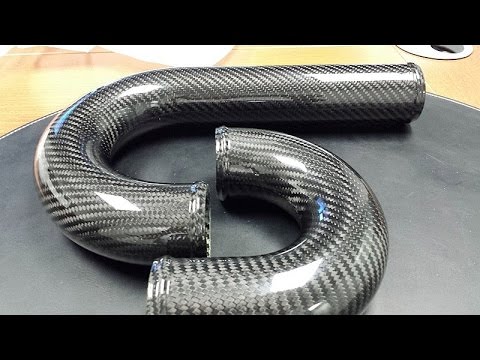CO2 Recycling : carbon to product
Collecting CO2 from the world’s smokestacks is hard enough. But what do you do with the carbon? There is no killer app for storing the carbon underground, and using it to pump more oil out of the ground also is not a viable option. To address this problem, people have invented technologies that convert captured CO2 into new products.
Recycling Carbon Waste
There has already been a lot of discussion and research on how CO2 from oil facilities and coal plants can be captured and stored. A number of projects have been carried out to determine the viability of capturing CO2 before it gets into the atmosphere, compressing it as much as possible and storing it deep in the ground forever. But several companies are now attempting to put the wasted gas to good use instead of simply burying it underground.

Companies Using CO2 Creatively
US company Novomer, along with Albemarle Corporation, successfully made polypropylene carbonate (PPC) using carbon dioxide waste and is already manufacturing with the help of these polyols. They produce better quality adhesives for industrial use. The research for the project was conducted with funding from the US Department of Energy’s Office of Fossil Energy. And a chemicals company based in Germany has been successful in using CO2 to create polyurethanes. The company, Bayer, believes this can be used to create soft foam used in mattresses.
A handful of companies are also getting creative in the ways that carbon dioxide is used once it is captured from coal plant fumes. Dry CO2 cleaning, for example, is a new and innovative technology that utilizes recycled carbon dioxide in a number of creative industrial applications.
This technology uses the gas for cooling machine tools, cleaning complex medical instruments and electronic devices, selective extraction and even eco-friendly dry cleaning. The solutions can be applied in a number of different industries including solar energy, fiber optics, original equipment manufacturing and semi-conductors. The added environmental benefit is that it helps manufacturers avoid using and disposing of millions of gallons of water.
These are just a few of the newer and more innovative ways that carbon dioxide is being recycled and put to good use. There are several other industries that are already re-purposing CO2 in useful ways:
The plastics industry uses captured CO2 for constructing polymers and poly carbonate.
The beverage industry uses the recycled gas for carbonated drinks.
Fire extinguishers use the gas for fire suppression.
CO2 can be used as shield gas in welding, protection for carbon powder, as an inert agent for blanket products, injected into metal casings, propellant in aerosol cans, dry ice pellets for sand blasting and dry ice in refrigeration.
A new biodegradable plastic has been developed that is made using sugar and carbon dioxide. This new plastic can replace BPA containing plastics like polycarbonates.
Product: Carbon nanotubes, carbon fiber
This startup, staffed by researchers at George Washington University, developed a process for converting carbon dioxide into carbon fibers, or nanotubes, using molten electrolysis. The process, which uses CO2 and electricity, produces carbon nanofibers, which can be used as carbon composites — a strong, lighter-weight alternative to metal — to make a wide variety of products, including wind turbine blades, race cars, airplanes and bicycles.
Product: Methanol
-2.jpg)
This research team from Bangalore, India, is developing an artificial photosynthesis process to convert CO2 into methanol, a key feedstock and fuel. Conventional methanol is a liquid petrochemical used to make resins, pharmaceuticals, perfumes and a variety of other products. Scientists around the world are competing to develop the best process for converting waste CO2 into methanol.
Products: Chemicals, bio-composite foamed plastics
This team from Suzhou, China, is led by Wayne Song, an expert in wood-plastic composite, a material made from sawdust and plastic fiber. C4X uses captured CO2 to produce methanol, ethylene glycol and bio-composite foamed plastics.
Other natural fibers, in addition to wood and including rice hulls, palm fiber waste and flax, can be used to make bio-composites. These materials are increasingly making their way into green construction and environmentally friendly products to replace petrochemicals
Most carbon capture systems in operation today either pump that captured gas deep underground, trapping it in rock formations; or into oil wells, using it to boost the well’s output. But using electricity and a catalyst like zinc to separate an oxygen atom from carbon dioxide leaves carbon monoxide, which has a variety of industrial uses.
With current technology, the product with the most potential is ethylene, which can be produced using a copper catalyst that reacts with water.
Wood materials are produced without CO2 emissions
Construction sector can make a real difference by using wooden construction materials that both capture carbon for their entire life span as well as are produced with very little CO2 emissions during production.
“While planning any new building or renovating an existing one, we should look at the emissions created during the entire life cycle of the building – from the production of construction materials to the using phase and beyond. The dry mass of wood is 50% carbon, and this carbon is taken away from the atmosphere and thus does not contribute to the greenhouse effect”, Matti Kuittinen, architect and researcher from Aalto University continues.
In Europe, the renewable wood grows nowadays more than it is used, which increases the carbon capturing also in the growing phase. To guarantee the increase of forest reserve also in the future, sustainable forest management and forest certification are to be highlighted in sourcing.
Wood is the only construction material that stores carbon
Wood-based materials can be used in most parts of any building to capture carbon from the atmosphere. This allows designers and builders to reach ambitious CO2 reduction goals. For example, a passive house was designed for a cold climate with two alternative construction material combinations: wood frame with wood-fibre insulation and an aircrete frame with EPS insulation.
“Both options gave the buildings’ shell the same level of energy efficiency. However, producing the wooden alternative caused approximately 40% less CO2 emissions. Also, the amount of atmospheric carbon stored in its wood frame was almost four times as much as in the alternative”, Kuittinen explains.
Wooden building components store carbon in all buildings regardless of their frame, insulation and cladding materials. The largest potential for storing carbon can be achieved in external walls,


When some one searches for his vital thing, therefore he/she wishes to be available that in detail, therefore that thing is maintained over here.
What’s up to every single one, it’s genuinely a pleasant
for me to pay a visit this website, it contains helpful
Information.
Pretty section of content. I just stumbled upon your website and in accession capital
to assert that I get actually enjoyed account your blog
posts. Anyway I will be subscribing to your feeds and even I achievement you access consistently rapidly.